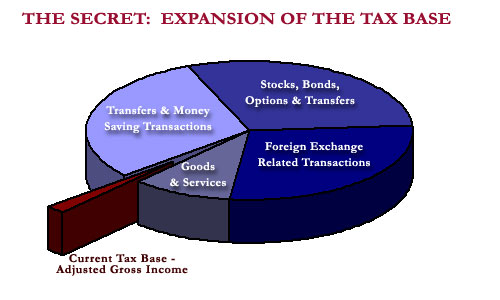Automated Payment Transaction Tax (APT). Have you heard of it ? I probably would not have heard of it had I not interviewed Green Party Presidential Candidate Jill Stein. I really like what the Green Party has to say on criminal justice issues and if climate change is something to be taken seriously, the Dem/Reps are certainly not doing that. The part of the Green Party Platform concerning taxes is kind of a mess, though. There are some interesting ideas in there, but it does not hang together too well. So I am grateful to Robert Steele for pointing APT out to me. I might have more on Mr. Steele in a future post. He is quite an interesting fellow, but as with Jill Stein, I will be “leading with tax”, as we sometimes say when we go to market. APT is the entirety of Mr. Steele’s federal tax program. You might debate whether it is a good idea or whether it would really work, but there is no question about its coherence.
APT is a proposal to replace all federal taxes with a single tax on all transactions. It is a little like the financial transactions tax included in the Green Party Platform, but much broader. The claim that it could replace all taxes is reminiscent of the proponents of Land Value Taxation, the idea that Henry George outlined in Progress and Poverty. The Green Party endorses Land Value Taxation, but not as an exclusive tax. APT is easier to explain then LVT. Basically any transaction occurring in the financial system will have a charge attached to it on both sides of the transaction. The tax would be automatically collected and remitted. Since it is every transaction and always the same rate, it would seem that it would not be that technologically challenging. Vendors already have software for sales tax that must take into account a plethora of exemptions and a variety of rates over thousands of jurisdictions. Since the base is so much broader than the income tax, the revenue neutral rate is very low. According to the computations of the proponents, the rate would be 0.35%. To compare it fairly to a sales tax you need to double it, since it is on both sides of the transaction making the rate 0.70%. When trying on an idea like this it is better to suspend judgment on the necessary rate.
The concept has been around for some time. Here is an early detailed discussion by Edgar Feige, who is credited with originating the idea.
The APT tax can therefore be viewed as a universal brokerage fee levied by the state to finance the panoply of services it provides. Most important among these are the maintenance of those institutions that protect and facilitate the acquisition and exchange of property rights. Like all brokerage fees, the APT tax establishes a spread between the buy and sell price of every transaction.
There are a couple of ways you could avoid APT. One is by dealing in cash. An additional part of the plan is to levy a charge as currency is issued or redeemed. In the paper he pegs that at about 2%. Another idea, which I have although I am sure it will not turn out to be original, might be to put an expiration date on currency. The larger the denomination of the bill, the shorter its period of being legal tender. You could also get around APT by barter, but barter is very expensive. The real incentive, I see would be to encourage vertical integration, since intrafirm transactions would not be subject to the tax. If you control the entire distribution channel from raw material to retail you might only get hit with the tax twice in going from original production to consumption as opposed to multiple times. The incentive to control the whole chain already exists, though. I don’t know how much of an additional incentive this might be.
Probably the biggest objection would be from people engaged in high volume trading. That is the biggest objection to the financial transactions tax. There is significant sentiment that slowing down trading might not be such a bad thing. Here is an observation in Doctor Feige’s paper:
By creating a tax wedge between the bid and ask price of financial assets, the APT tax provides incentives to lengthen the average holding period of financial instruments. It thereby reduces the present disparity between short-term financial time horizons and long term real investment time horizons.
That was written in 1999. There are quite a few people who believe that subsequent enhancements in high velocity trading have not been such a good thing for the real economy.
Clearly this idea has been around for a while without getting a lot of traction. It is one of the virtues of alternate political voices, that they will keep ideas like this alive. I am grateful to Mr. Steele for bringing this to my attention and hope to hear more from him.
You can follow me on twitter @peterreillycpa.
Originally published on Forbes.com Oct 28th, 2012































































































